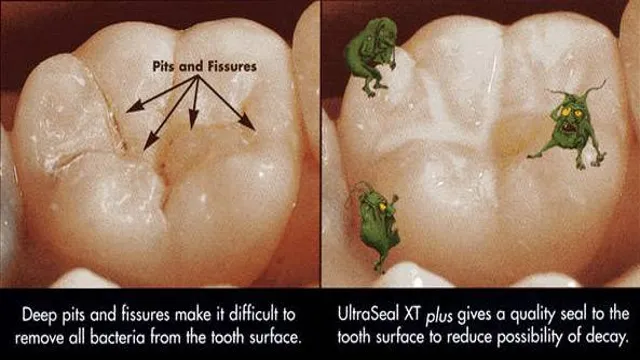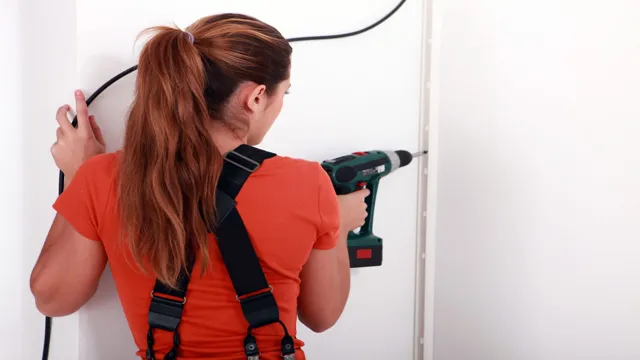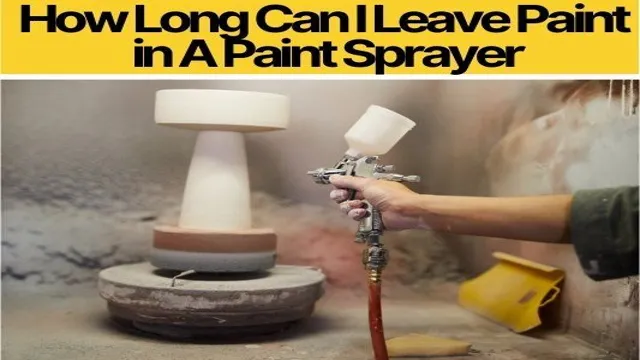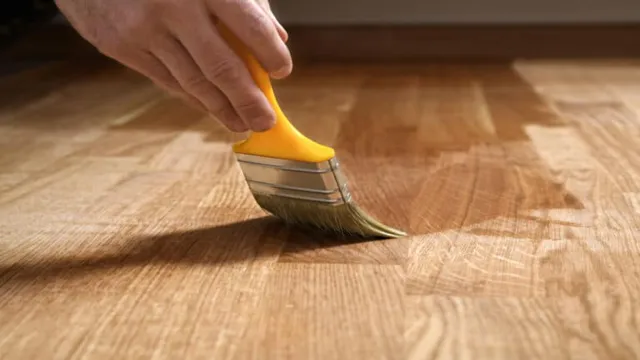How to Fix Polycrylic Problems: Tips and Tricks for Smooth and Flawless Finishes

Are you struggling to achieve a flawless finish on your DIY projects with polycrylic? You’re not alone. Polycrylic is a popular sealant that provides a protective and durable coat to your projects. However, it can also be a headache to work with if not applied correctly.
Issues like brush strokes, bubbles, and cloudiness can ruin the final result if not fixed promptly. That’s why in this blog post, we will discuss common polycrylic problems and offer tips on how to fix them. Whether you’re a seasoned DIYer or a beginner, you will find valuable insights to help you achieve a professional-looking finish on your projects.
So, be ready to grab your paintbrush and let’s get started!
Common Polycrylic Problems
Polycrylic is a popular finishing option for woodwork projects due to its durability and clarity. However, like any other finish, there are instances when polycrylic problems occur, leaving your project with unsightly blemishes. One of the most common problems is brush strokes or bubbles showing in your finish.
To fix this, you can sand lightly with 220 grit sandpaper and apply a second coat of polycrylic in a different direction from the previous coat. Another issue is yellowing, which is often caused by exposure to sunlight. If this happens, you can try sanding away the yellowed layer and applying a new coat of polycrylic.
Lastly, if you experience cracking or peeling, it may be due to improper curing time or application. In this case, you should sand the affected area and apply a new coat after ensuring the previous coat is completely dry. By knowing how to fix polycrylic problems, you can ensure that your woodwork projects maintain their lovely finish for years to come.
Yellowing
If you’ve ever worked with Polycrylic, chances are you’ve come across the yellowing problem. This occurs when the clear coat takes on a yellow hue that can significantly alter the finish of your project. It’s a common Polycrylic problem when exposed to sunlight or heat over time, and can be frustrating for DIY enthusiasts.
Although it’s impossible to prevent, you can slow the yellowing process by ensuring your workspace is well-ventilated and reducing the amount of sun exposure to the project. Additionally, make sure you use high-quality Polycrylic to avoid a lower-grade formula that might yellow more easily. Finally, be patient and allow your project to fully cure before subjecting it to sunlight or extreme temperatures, as this can also cause yellowing.
By following these tips, you can reduce the impact of yellowing on your Polycrylic projects.

Bubbles and Blisters
Polycrylic Bubbles and blisters can be a frustrating problem when working with polycrylic. The most common cause of bubbles is shaking the polycrylic container before use. This creates air bubbles that stick to the surface during application.
To avoid this, stir the polycrylic gently and periodically throughout the project. Another culprit of bubbles can be using a foam applicator instead of a brush. Foam applicators trap air and can cause bubbles to form when applied.
To prevent blisters, avoid applying polycrylic in direct sunlight or on a surface that is too hot. The heat causes the polycrylic to dry too quickly, which can create blisters in the finish. Ensuring proper temperature and air circulation during application can also prevent blisters.
Taking the necessary precautions can ensure a smooth and flawless application of polycrylic.
Streaks and Brush marks
Streaks and brush marks can be a common problem when applying polycrylic. Polycrylic is a water-based protective coating that can be used on surfaces such as wood, metal, and concrete. Although it is easy to use, it can be tricky to apply it without leaving behind any streaks or brush marks.
Streaks can appear when the application is uneven, and brush marks can be caused by using too much pressure during the application. To avoid these issues, it is essential to use a high-quality brush and apply the polycrylic in thin layers, allowing each layer to dry completely before applying the next. It is also important to ensure that the surface is clean and free from any debris before starting the application.
By taking these precautions, you can achieve a smooth and flawless finish without any streaks or brush marks. So go ahead and give polycrylic a try on your next project!
Preventing Polycrylic Problems
Have you ever experienced problems with your polycrylic finish? If so, don’t worry, there are ways to fix it. One common problem is when the finish becomes cloudy or milky after drying. This is usually caused by applying the polycrylic in conditions that are either too cold or humid.
To fix this, you can sand the surface with fine-grit sandpaper and then apply another coat of polycrylic in better conditions. Another problem is when the finish starts to turn yellow over time. This happens when the finish is exposed to sunlight or other sources of heat.
To prevent this, you should avoid placing your finished item in direct sunlight and applying several coats of polycrylic to provide a protective barrier. Overall, working with polycrylic can be challenging, but with a little bit of knowledge and patience, you can achieve a beautiful and long-lasting finish.
Proper Surface Preparation
When it comes to using polycrylic, proper surface preparation is key to preventing potential problems. Whether you’re working on furniture, cabinets, or any other kind of surface, taking the time to prepare it correctly will ensure a smooth and flawless finish. To begin with, you must clean the surface thoroughly to remove any dust, dirt, or other debris.
Sanding the surface is also crucial, as it helps to create a rough surface for the polycrylic to adhere to, resulting in a better finish. Additionally, you may need to use a primer to create an even base that is more conducive to achieving the desired results. By taking the time to properly prepare the surface, you can avoid issues such as cracking or peeling, ensuring a beautiful final product that will last for years to come.
So, don’t skip this important step – invest in proper surface preparation and enjoy the benefits of a smooth and successful polycrylic project.
Correct Application Techniques
Polycrylic is an excellent protective finish for many woodworking projects, but it can be tricky to apply. To prevent common polycrylic problems like sticky spots or streaky finish, you need to make sure you’re using the correct techniques. First, ensure that your surface is clean before you begin, so that there’s no dust or debris that may get trapped under the finish.
Secondly, use a high-quality brush or foam roller and apply the polycrylic in thin layers, rather than trying to cover the entire surface all at once. Finally, be patient and allow each layer to dry completely before applying the next one. By using these simple application techniques, you can ensure that your polycrylic finish looks smooth and professional every time.
Recoat and Dry Time
When using polycrylic, it’s important to understand proper recoating and drying times to prevent any potential problems. Recoating too soon can create a tacky, uneven finish, while waiting too long can cause the first coat to become too hard, making it difficult for future coats to adhere properly. Generally, it’s recommended to wait about 2 hours between coats, but this can vary depending on factors like humidity and temperature.
It’s also important to make sure each coat is completely dry before applying the next. To check for dryness, gently touch the surface with your finger. If it feels cool and smooth, it’s ready for the next coat.
However, if it feels sticky or tacky, give it more time to dry. By following these guidelines, you can ensure a smooth, even finish when using polycrylic on your woodworking projects.
Fixing Polycrylic Problems
If you’ve ever worked with polycrylic, you know how frustrating it can be when things don’t go according to plan. But don’t worry, there are solutions to common polycrylic problems. For example, if you’re dealing with brush marks, don’t panic! Simply sand down the affected area and apply a new coat of polycrylic using long, even strokes.
If you’re dealing with bubbles, try using a foam brush instead of a traditional brush and be sure to apply the polycrylic in a thin layer. Additionally, if you’re having trouble with yellowing, consider using an oil-based polyurethane instead of polycrylic as it tends to yellow less. These simple tips can help you fix polycrylic problems and achieve the finish you’re looking for.
Yellowing Fix
If you’ve ever applied polycrylic to a project only to find that it has yellowed over time, don’t worry, you’re not alone. This is a common problem that many DIYers face. Luckily, there are ways to fix polycrylic yellowing and restore your project to its original beauty.
The first step is to sand the affected area with a fine-grit sandpaper to remove as much of the yellowing as possible. Next, apply a coat of clear shellac to the surface, which will act as a barrier to prevent further yellowing. Finally, apply a new coat of polycrylic to the surface, making sure to follow the manufacturer’s instructions for application and drying times.
By following these steps, you can restore your project to its original shine and prevent yellowing from happening in the future. Remember, prevention is key – always be sure to use high-quality materials and follow proper application techniques to avoid yellowing issues altogether.
Bubbles and Blisters Fix
Polycrylic is a popular finish for wood projects, but it can be frustrating when bubbles and blisters appear on the surface. Thankfully, there are simple solutions to these problems. First, make sure to thoroughly stir the polycrylic before applying it, and don’t shake the can.
Shaking can cause air bubbles to form inside. Second, use a foam brush or a high-quality bristle brush to apply the polycrylic. Avoid over-brushing, as this can create more bubbles.
Third, if bubbles do appear, gently use a heat gun or hair dryer on a low setting to pop them. Don’t use too much heat, as it can cause the polycrylic to discolor or bubble further. Finally, if blisters appear, lightly sand the affected areas and apply another coat of polycrylic.
With these simple fixes, your wood project will have a smooth and professional finish.
Streaks and Brush marks Fix
Polycrylic If you have ever used Polycrylic for your DIY projects, you may have noticed streaks and brush marks. These can be frustrating and ruin the overall look of your project. However, there are simple solutions to fix these Polycrylic problems.
One of the best ways is to sand the surface down gently with a fine-grit sandpaper. This will help smooth out any uneven surfaces and remove any rough spots. Another way to fix brush marks is to use a foam roller instead of a brush.
A foam roller provides a smoother application and helps to distribute the Polycrylic evenly. It is also important to allow each coat to dry completely before adding another layer. Rushing through the process can result in streaks and brush marks.
Lastly, make sure you are using high-quality brushes and tools, as this can make a big difference in the final result. So, if you are struggling with Polycrylic problems, don’t worry, just follow these simple tips to get the perfect finish you desire.
Conclusion
In conclusion, fixing polycrylic problems requires patience, precision, and a willingness to troubleshoot. Whether you’re dealing with streaky finishes, bubble formation, or adhesion issues, the key is to take a step back, assess the situation, and make adjustments as necessary. From using the right tools to applying multiple coats with a light touch, there are plenty of ways to achieve a flawless polycrylic finish.
So don’t let a few bumps in the road discourage you – with a little perseverance and a lot of elbow grease, you’ll be well on your way to a picture-perfect result!”
FAQs
What are common problems to avoid while using polycrylic?
Some common problems to avoid while using polycrylic are applying too thick of a coat, not allowing enough drying time between coats, and not sanding between coats.
How do I fix bubbles or brush strokes in my polycrylic finish?
To fix bubbles or brush strokes in your polycrylic finish, lightly sand the affected area with fine-grit sandpaper and then apply a light, even coat of polycrylic.
How do I prevent yellowing of my polycrylic finish over time?
To prevent yellowing of your polycrylic finish over time, use a water-based polycrylic instead of an oil-based one and avoid exposing the finished surface to direct sunlight.
How do I clean up spills or mistakes with polycrylic?
Clean up spills or mistakes with polycrylic by wiping off the excess with a damp cloth or by using soap and water. If the polycrylic has already dried, use a paint thinner to remove it.
Can I use polycrylic on outdoor surfaces?
Polycrylic is not recommended for use on outdoor surfaces as it may not withstand exposure to the elements and UV rays.
How many coats of polycrylic should I apply for a durable finish?
It is recommended to apply at least 2-3 thin coats of polycrylic for a durable finish. Avoid applying too thick of a coat as this may result in drips or a cloudy finish.
Can I apply polycrylic over stained wood?
Yes, you can apply polycrylic over stained wood. Make sure to allow the stain to dry completely before applying the polycrylic and lightly sand between coats for a smooth finish.







